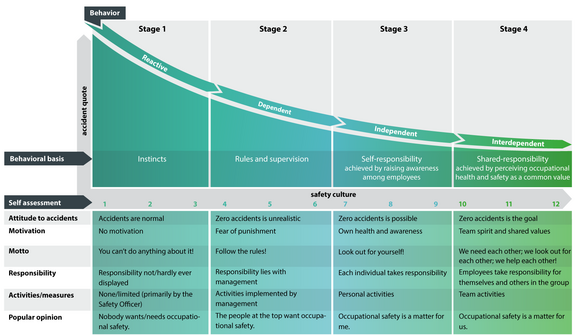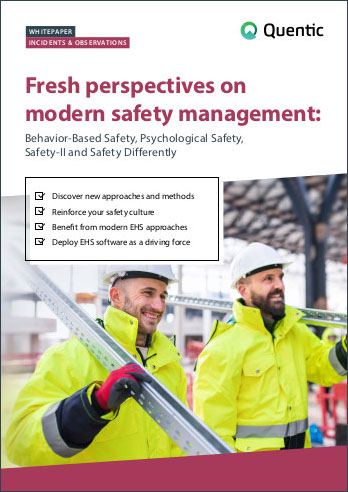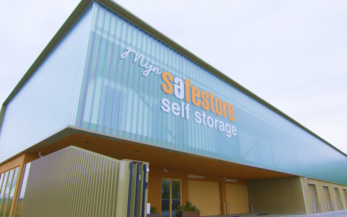6 min02/06/2023
The term “safety leadership” describes a style of leadership that aims to actively implement the integral values of occupational health and safety. It is underpinned by two fundamental questions:
- Who takes responsibility for occupational health and safety?
- How can we work strategically to improve this?
Who feels responsible for occupational health and safety is determined by the prevailing safety culture. A common benchmark for evaluating safety culture is the Bradley Curve. Depending on which level of safety culture your company has reached, it is possible that nobody feels responsible, that only safety officers feel responsible, managers or individual employees feel responsible for themselves, or that all employees feel responsible for each other. However, when a safety culture has reached the most advanced level, all employees become safety leaders.









